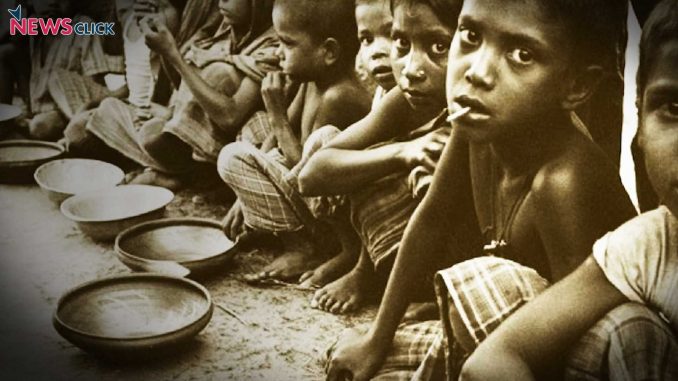
In News
The Union Ministry of Health and Family Welfare released the first phase data of NFHS 2019-20.
In-Detail
- The Union Ministry of Health and Family Welfare released the first phase data of the National Family Health and Survey (NFHS) 2019-20.
- When all the phases are complete, the survey becomes NFHS-5.
- Despite dramatic improvements in sanitation and access to fuel and drinking water, several states have recorded worsening levels of child malnutrition.
- The latest data is recorded for 17 states that include Bihar, Maharashtra, West Bengal and 5 Union Territories and J&K.
- In Phase 2, states like Uttar Pradesh, Madhya Pradesh and Punjab will be covered and the results are expected to be out by May 2021.
- The first data phase shows that several states have witnessed a rise in child malnutrition under 5 years of age with parameters such as child stunting, child wasting, child mortality and share of children underweight.
- The parameters used for measuring child malnutrition by NFHS is similar to that of the Global Hunger Index.
- Child wasting is acute undernutrition. This refers to children having low weight for their height.
- States which witnessed high child wasting were Telangana, Bihar, Kerala, Assam and UT of J&K.
- Maharashtra and West Bengal were stagnant on Child Wasting.
- As per NFHS, the proportion of underweight children has increased in Gujarat, Maharashtra, West Bengal, Telangana, Assam and Kerala.
- The reverse happened in child stunting which reflects chronic undernutrition and refers to the percentage of children who have low height for their age.
- Stunting may have long-lasting adverse effects on the cognitive and physical development of a child.
- There were increased levels of stunting in states Telangana, Kerala, Gujarat, Maharashtra and West Bengal.
- Under 5 Mortality rate data is stagnant in several states.
- Infant Mortality Rate refers to several deaths per 1000 live births for children under the age of 1.
- Between NFHS-3 of 2004-05 and NFHS 4 of 2015-16, there was progress in infant mortality reduction.
- In NFHS-3, there were 74 deaths per 1000 births Under 5 Mortality.
- In NFHS-4, there were 50 deaths per 1000 births Under 5 Mortality which shows a decline of 33% over 10 years.
- NFHS-5 and NFHS-4 are five years apart but have very little progress in many states.
- In Maharashtra and Bihar, the Under 5 Mortality Rate is the same in NFHS-5 and 4 and 3% over five years.
- Child mortality is related to child malnutrition.
- The NFHS-5 included new points such as disability, preschool education, and access to toilet facility, death registration, bathing practices during menstruation, methods and reasons for abortion.
Conclusion
An interesting fact to notice in the report is that the states which reported high child undernutrition and stunting are in fact rich states of the country. They are industrial powerhouses of the country and contribute a large share of the country’s GDP. Yet, the child malnutrition numbers in these states did not represent the economic progress of these states. This clearly shows that the priorities of these states lie elsewhere than on giving children their rightful opportunity in life.
The majority of the population in the country leads a life on a thin wire where even a minor financial catastrophe pushes them into poverty and it is the children who bear the brunt in the form of hunger and malnutrition. Though the government has launched many schemes to alleviate hunger and malnutrition in the country, it seems the benefits are not reaching the needy. It is time, India takes concrete steps to eradicate child hunger and malnutrition in the country.

Leave a Reply
You must be logged in to post a comment.